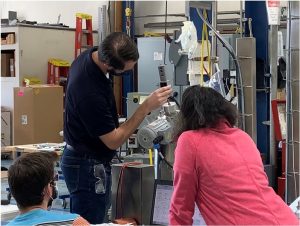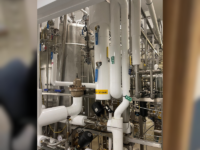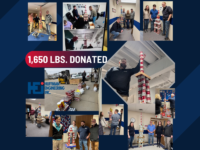In the world of Control System Integration FAT stands for Factory Acceptance Test. Some companies may use FDT (Factory Demonstration Test) or a host of other acronyms, but the core underlying principal is a test or series of tests, witnessed by the customer, prior to arriving onsite that the control system will work in the field or manufacturing setting it is destined for. These tests are a way to check the performance of a system design and the underlying programming before the stakes are raised by the concerns related to the final environment such as down time on a manufacturing floor. The most important thing to remember is that a FAT will only be as good as the engineers, technicians and end users make it. There are three key factors to keep in mind when designing any FAT to ensure it ends up being the helpful tool it should be.
Attitude
As with most things in life, the first step to a successful FAT is the attitude of the participants approaching the FAT. This rings true whether you are the Control System Integrator who designed and programmed the system or the end user who is there to make sure the system received meets the process needs. Many people on both sides of the FAT see it as just a box that needs to be checked before the real work onsite can begin. This idea completely misses the point. A Factory Acceptance Test is a critical tool used to ensure the control system aligns with the customer needs. Both parties need to approach the FAT recognizing its enormous value in bringing up scenarios that have yet to be thought through. Another harmful attitude to a successful project would be to view a FAT as a competition between the End User and the Integrator. This attitude treats the FAT as a game whose object it to find more of the other team’s flaws. The FAT should function as a cooperative game where all the players are working together to win. In this case: producing the best control system.
Functional Testing
The next tip for getting the most out of your FAT is to make the test as close to real life as possible. The basic rule of thumb is whatever final physical hardware you have for the system should be used in the FAT.
Functional Testing Improvements:
Test outside normal operating ranges.
Test loss of power and power up conditions.
Use meters that are in calibration and accurate.
Use an actual processor not an emulator to run the PLC program
Set up communication between the PLC and temporary SCADA
Have a process meter or a second PLC that can supply analog signals
Use a TV to display the SCADA screens for the audience
Run through control narratives in addition to IO checks
Test security functionality. Make sure users can access what they need but remain locked out of other areas based on security or permissions.
Have one device of each communication protocol available and prove you can communicate
with it. Wire run commands to run feedbacks
Get a demo VFD so the system visibly spins a motor (Many distributors will loan you a demo setup if you ask)
Have a process meter or a second PLC that can supply analog signals
The sheer amount of work and time it will take to set up and execute a test in this manner might seem prohibitive to some. They are correct, it will take much longer to get through the FAT, but you will also find and debug many more problems ahead of time. This efficiency in problem-solving, saves what could be- costly hours onsite, especially on a more complex project. In my experience, a longer FAT is well worth the effort because one hour of work during the FAT at the shop approximately equals four hours of work onsite and can be completed under much less pressure.
Viewpoints
“What I told you was true, from a certain point of view…”
– Obi-wan Kenobi
When programming a system, the programming engineer comes up with solutions to all the problems and processes he or she is aware of. Rarely does that equate to all the problems and processes that exist. A simple step that will immediately improve your FAT is to have people with different points of view attend. The program is built to overcome the obstacles that the programmer sees. At first glance an operator or process technician may see an obstacle that never occurred to the programmer. While it is often true that the program worked from the programmer’s viewpoint, from the operator’s point of view it may not because they know of outstanding circumstances that make the control loop irrelevant. The best FATs have as many different viewpoints of the system as possible present for the testing. Just like proofreading a paper, a fresh set of eyes will smooth out a series of operations and result in a better control system.
Factory Acceptance Tests are critical to a smooth startup of any control system. They provide an opportunity to save time by correcting any errors and improving design efficiency prior to deployment of a system onsite. By controlling the attitude with which you approach a FAT, using real systems to ensure a high ratio of testing to simulating, and including people with different viewpoints of the final system, you can make the FAT have a greater positive impact on any project and ultimately create success for the entire team.

Want to read more about our approach to FAT tests and project methodology? Check out Project Methodology | Huffman Engineering on our website.
Let our professional and degreed engineering experts at Huffman Engineering be your go-to subject matter experts for your control systems, automation or engineering needs. Request a Quote today by reaching out to our talented team.
Nick Hein
Mechanical Engineer
Huffman Engineering
[email protected]
Huffman Engineering, Inc. (HEI) is an engineering services firm specializing in control system integration, design, and engineered studies. Our start-to-finish project expertise includes design, development, implementation, support, testing, and operator training serving industrial customers and municipalities, with a focus on pharmaceuticals, life sciences, utilities, and food & beverage. HEI has a 34-year history of delivering system integration projects and building robust, reliable automation systems for highly regulated industries meeting stringent regulatory requirements including the FDA, USDA, and EPA among others. HEI is a CSIA Certified control systems integration company, with a highly skilled team of electrical/mechanical engineers, and experienced technicians who deliver optimal industrial automation solutions. Based in Lincoln, Nebraska, Huffman Engineering has served the Midwest since 1987.
____________________________
Making Ideas Work




